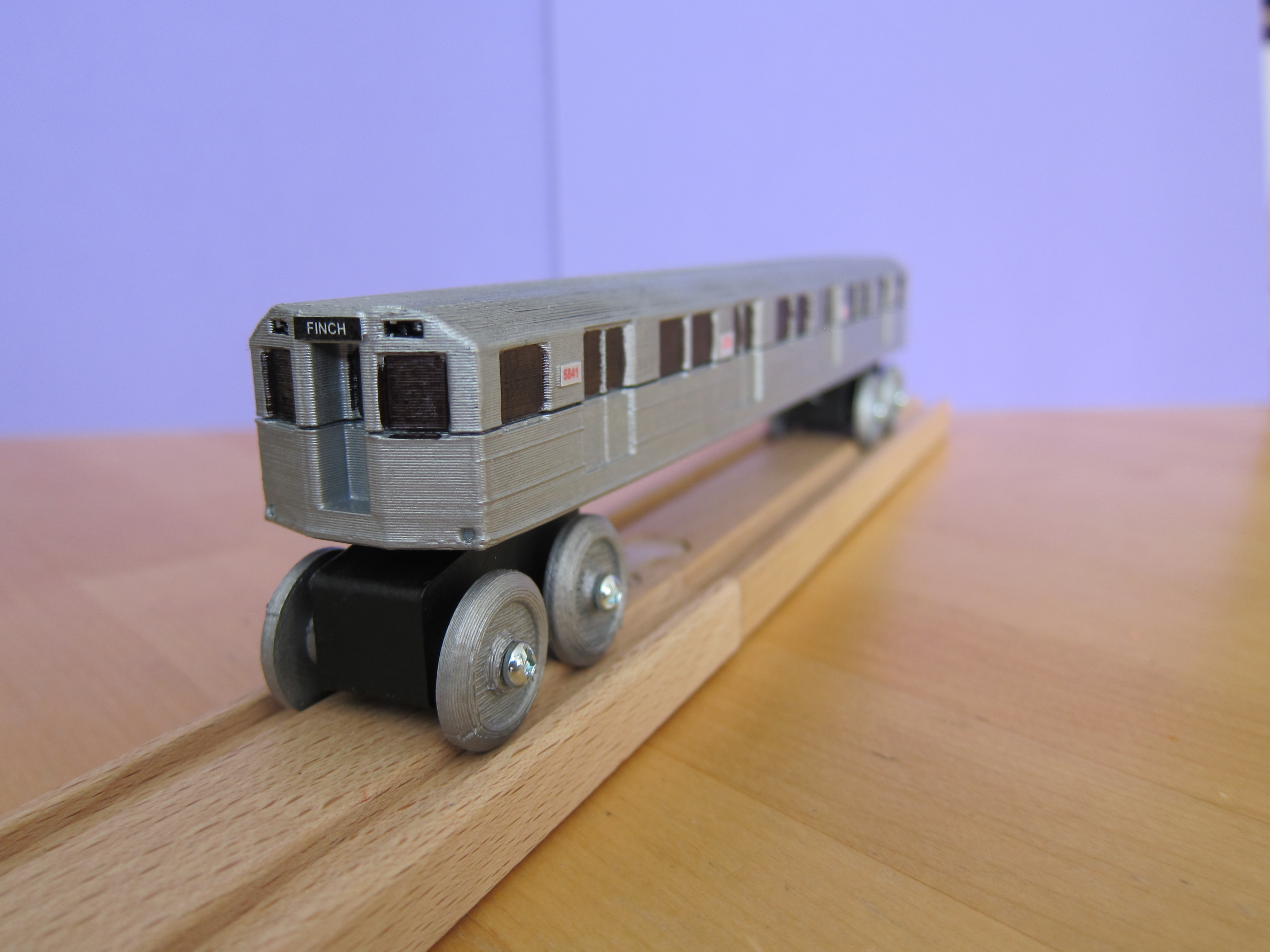Designing a toy subway car
After learning OpenSCAD basics in a previous project, I set out to build a toy Toronto TTC subway car for Brio-compatible wooden train tracks.
I stumbled on a simple drawing of the TTC H6, and started tracing the simple features in Inkscape, exporting the shapes to OpenSCAD, and adding depth to the design. For more information about the TTC H6, visit the Canadian Public Transportation Board’s page.
I found a design for a Diesel engine on Thingiverse by Nick Randall - I decided that his trucks and wheels would make an excellent base for my train, as he had a tested design with the right dimensions.

The Toronto Public Library has a 2 hour limit on 3D print jobs. To work within this limitation, I printed the design at low resolution over three sessions. The body was printed in two sessions, and glued together with Krazy Glue (cyanoacrylate). In one of the sessions, a different filament was used. The final toy was painted and assembled with screws.
I learned a few more things about 3D printing, design in general, and sharing online.
- Parts printed with PLA material can be glued together with Krazy Glue
- In this instance, there is a visible gap. The parts were printed with different filament, and as a result, the parts didn’t align exactly. The output from one of the print jobs warped. When laid flat, the middle was probably 2 to 3 mm above the surface
- As would be expected, detail is lost when printing at low resolution
- When designing a model for printing on 3D printers, the limitation of not being able to print in mid-air must be considered. Although printing with supports is a solution, it leaves a less-than-perfect surface. It would be interesting to learn how more experienced designers work around this issue. It would also be interesting to try a 3D printer capable of using a dissolvable support filament.
- A model printed with PLA can be painted with Testor’s Enamel
The library is a great place to learn about 3D printing, and print small parts. It is less expensive than other places - a two hour print job costs about $6. For my next project, however, I would probably look at other alternatives without these limitations. I think the library has probably achieved a good compromise, making a technology available to anyone with interest to learn and a library card, but definitely not offering a service which would compete with commercial offerings.
When I thought about 3D printing, I though about the physical realization of an object. In reality, there are many things that must be considered when designing anything physical, and 3D printing is not the solution to all of them. This is evident even in the simplest of designs, such as this one, where metal screws are used to fasten parts and enable movement.
This model was designed to scale - this might be appropriate for a scale model, but the train looks very long relative to the other wooden trains on the track. Many of the features, such as the lights, windows, and doors, are very small. If I were to design another toy train, I would exaggerate features, and would not design to scale. George’s Trains, a local model rail hobby store, apparently stocks a wooden subway train that follows these principles and appears to be a much better toy.
Finally, it has been fun posting and sharing my designs on Thingiverse. Although I have accounts on other sites with social-network type features, this is the first time I’ve posted anything. It is fun to have an forum to share my work, and it’s great feeling to see that people have looked at my design and clicked “like” - recognition for someone having fun with basic skills, practising a hobby.
This subway car can be downloaded from hotelexistence.ca or Thingiverse.